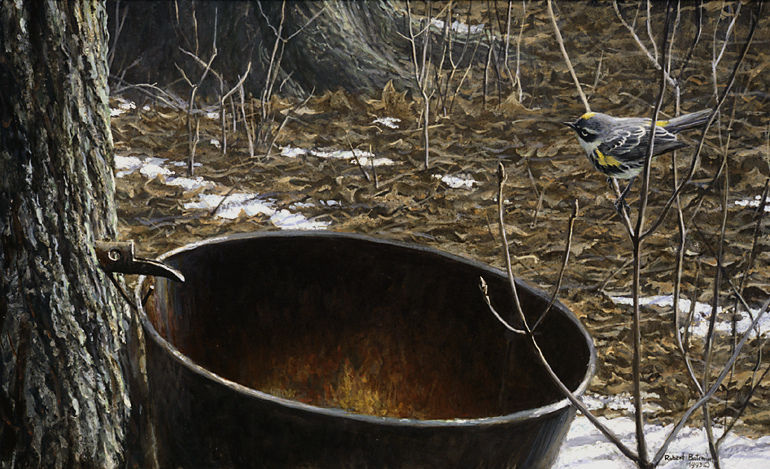- Sap Bucket & Myrtle Warbler
- (scroll down for description)

-
-
-
-
-
-
-
-
- 11 7/8” x 20”, acrylic on board, 1993
-
- Our ancestors evolved wonderful comprehensive systems for working gently with nature. They had to, because destroying nature would destroy the basis of the economy and even human life. In the late 20th century we have been under the illusion that modern technology can circumvent nature.
-
- Maple syrup production is a good example of the gentle interface between traditional man and nature. With the right timing, the sap can be taken from sugar maple trees year after year. The sugar bush was an important part of the working farm. It not only provided maple syrup and sugar for family use and for sale, it was a perfect source of firewood in an age when heat was not provided by oil or electricity. The maple-beech-hemlock forest type is a climax stage. That is -- the young trees can continue to grow in their parents' shade and so the various species perpetuate themselves. As old trees are removed for firewood, the young trees are ready to replace them.
-
- In this painting, I have shown a mature maple with its spile and traditional tin sap bucket. The warmth of the early spring sun is melting the snow and causing the sap to rise. The young maple seedlings are well established, some as saplings. Through the carpet of last autumn's leaves, a spectacular array of spring flowers (trilliums, trout lilies, bloodroot and many others) are about to emerge. And the first of the migrant warblers to arrive is searching the area for early insects. The myrtle (yellow-rumped) warbler is a true harbinger of spring in the woodlot.

